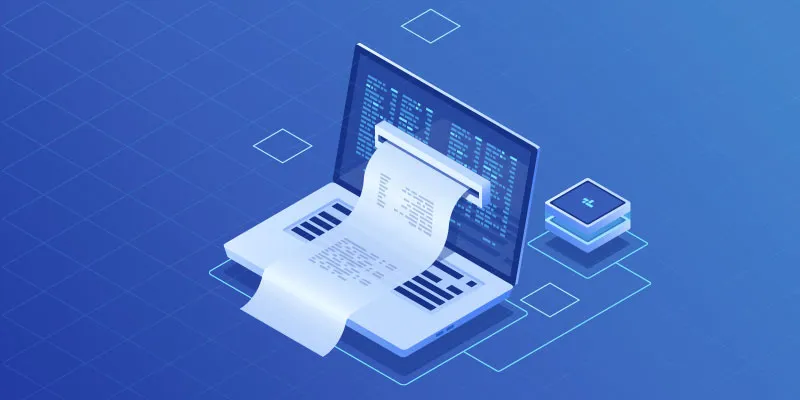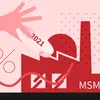How can nano entrepreneurs in the unorganised sector scale through digital interventions
As India went into a lockdown, most of us quickly adapted to working from home. But what about the nano-entrepreneurs? What could have helped these vyapaaris tide over this period?
The chai tapri on every corner, the ironing carts, the small tailor shops, and the street food stalls we all frequented during better times — all of them just came to standstill once the lockdown was announced pan-India.
It isn’t just the vyapaari or nano entrepreneur’s community, but a large stratum of society that is dependent on their services, that was and is impacted.
Let’s admit it! Not all across the country can afford to shop online or visit departmental stores. Not only are these vyapaaris essential to provide necessary everyday services but are also convenient for being just around the corner, making home deliveries and at affordable rates.
They are a vital link in the last leg of the supply chain. We wouldn’t be exaggerating if we said that this segment was one of the worst-hit due to the pandemic. And, the lockdown, which spanned over months, threatened their livelihood and their survival.
As India went into lockdown, most of us quickly adapted to working from home, to having our necessities ordered online. But what about these vyapaaris? What could have helped them tide over this period? Those were the questions that needed answering.
They already operated with a few evident disadvantages, such as little to no savings, and very limited access to regulated credit. Besides, the lack of familiarity and access to digital technology also made things very difficult for them.
Digital technology and access to money were the two key factors that helped businesses navigate this period of extreme uncertainty. Businesses that were tech-enabled were able to at least try and make a go of it. This was a gap that needed to be filled for the vyapaaris as well.
The missing foundation
The evident gap seemed to be in the nano entrepreneur’s inability to leverage the potential of digital technology and platforms to further their business. But, there were even more fundamental problems to be solved — first, getting access to a basic smartphone. However, this was a problem many managed to solve, at least temporarily, by borrowing a device from someone in their immediate circle. While this may not be a long-term solution, it certainly allowed them to manage at the moment.
In fact, their ability to adapt has been quite commendable across the board.
They managed to overcome hurdles, including the lack of access to devices, low literacy levels, and unfamiliarity with technology to stay afloat and reinvent themselves for the times.
Chaiwallahs and istriwallis on Zoom calls
The first barrier that needed to be resolved was the ability to engage with these entrepreneurs and build digital literacy. Some vyapaaris learnt via traditional phone calls and video modules on tools such as Zoom for communication.
In little to no time, they got quite conversant with Zoom calls, WhatsApp, and GroupTalk, among others. For those who still found it difficult, they roped in their children or neighbours who were slightly more tech-literate and got them to demonstrate how to use these tools until they were comfortable with it themselves.
Given how quickly the vyapaaris adapted to video and chat, the second barrier was thinking digital — ranging from basic hygiene requirements given during pandemic, to business restructuring, to digital technology adoption.
They realised that customer outreach to win back the lost customers alone would not help these vyapaaris; the pandemic had badgered them in all ways possible, disrupting their livelihood in toto.
The all-round performance
Just like a large organisation would look at its digital transformation across functions in a holistic manner, it is imperative that these vyapaaris also looked at digital adoption across various aspects of their business.
Digital supply chain management
While earlier, sourcing their wares meant a long journey to wholesale markets, like the one in Chickpet, today, this audience is slowly but surely getting comfortable with identifying suppliers and procuring materials via apps like IndiaMart.
Indira, a Bengaluru-based nano entrepreneur, faced procurement challenges due to the lockdown. She learnt that she could source saris through the IndiaMart platform. She invested Rs 65,000 and made a profit of Rs 20,000.

Now open for business
WhatsApp, if at all used, was purely to chat with one’s friends and family members. But now, many vyapaaris, ranging from fruit and vegetable vendors to tailors, to those who retail clothes and jewellers, have successfully started using the platform for their businesses.
Coordinating orders and deliveries with their customers, disseminating catalogues of their wares, staying engaged with customers — all of this has slowly started happening via WhatsApp.
In fact, one of the first business messages shared by these vyapaaris was notifying their existing customers that they are open for business. The message was supported with photographs of hygiene measures taken by them to ensure their customers that they are in safe hands.
Google Maps have become an important part of the discovery process, or shall we say, ‘being discovered’ process, as these vypaaris have started posting their businesses on Google Maps for new customers to discover them in their area.
Giving digital the credit
Vypaaris accepting digital payments isn't as exciting news as the long-term repercussion of it. From being a largely unbanked audience to now being comfortable with making and receiving digital payments via UPI apps, they are slowly but surely building a digital trail that could hopefully, over time, get them access to formal credit.
Building an ecosystem for Vyapaaris
With focused training, combined with some degree of handholding, and support of their peers — the vyapaari segment has slowly but surely managed to transform their businesses to better suit the times.
Just as demonetisation proved the tipping point for most of India to move from cash to digital transactions, the pandemic has been the catalyst that accelerated digital adoption for the vyapaaris.
We believe that the solution lies in not just independent individual activities, but an entire ecosystem that needs to be built for them. Vyapaaris, who were earlier scared of technology, are now embracing it. Moving vyapaaris actively into the digital domain would be a long and ardent journey but, it is an imperative journey that would give these vyapaaris an equal opportunity to evolve and sustain themselves, not just in times of crisis but in an ever-changing world.
Edited by Suman Singh









